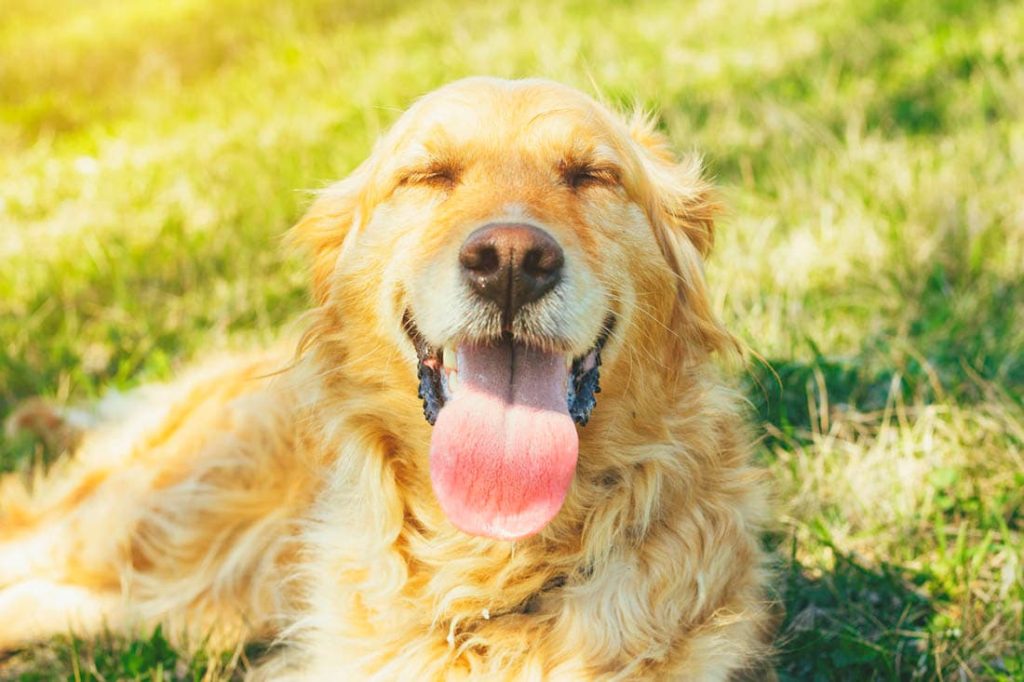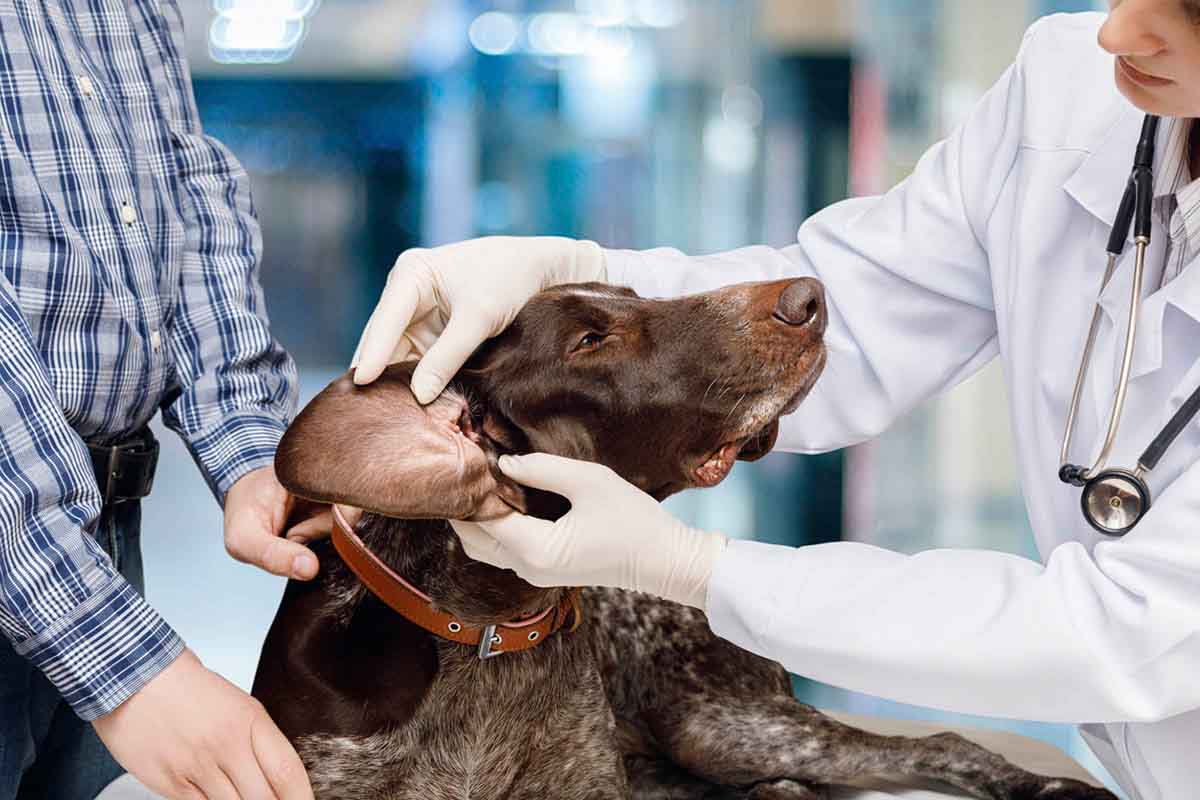Why Do Dogs Sigh?
It’s a subtle but distinct sound that might leave you wondering: Why does my dog sigh? Is it contentment, frustration, or simply a physiological response?
If you’re a pet parent, you’ve probably noticed your best friend sometimes lets out a deep sigh after settling down. It’s a subtle but distinct sound that might leave you wondering: Why does my dog sigh? Is it contentment, frustration, or simply a physiological response?
Sighing in dogs can have multiple meanings, depending on the context, the dog’s health, and their overall demeanor. Let’s explore the various answers to the question why do dogs sigh?
1. Emotional Expression: Contentment and Relaxation

One of the most common reasons dogs sigh is as a sign of contentment and relaxation. If you’ve ever noticed your dog lying down after playtime or after receiving affection, he might take a deep breath and let out a gentle sigh. This soft vocalization can be his way of showing that he is at ease in the moment.
Dogs are highly attuned to their environment, and they often seek comfort in the familiar. A big sigh might indicate that your dog is feeling content, safe, secure, and satisfied with his surroundings. This sighing behavior often accompanies other signs of relaxation. That includes stretching, lying down with their belly exposed (possibly also looking for a belly rub), or closing their eyes.
In this context, a sigh from your pooch is a positive sign that they are comfortable. It’s akin to a human sighing after a long day’s work when they finally sink into a cozy chair. For dogs, this is a signal to their owners that they are at peace. That can be reassuring for pet parents who want to ensure their dog’s emotional well-being.
2. Seeking Attention or Interaction
Dogs are social animals and communicate with humans in various ways. They use vocalizations like excessive barking and whining, dog body language such as tail wagging, and even let out a deep exhale as if to say, “Pay attention!”
It may be your furry friend’s way of signaling that he wants a little attention from his favorite human.
When a dog sighs in your presence and follows it up with a longing gaze or positions themselves close to you, they might be trying to get you to engage with them. They might be saying, “I’m here, and I’d like some attention, please.”
This form of sighing is often accompanied by subtle body language cues. They might lean into you, rest their head on your lap, lip lick, or nudge you gently with their nose or paw. It’s important to pay attention to these cues because dogs use their body language as a primary form of communication.
While a sigh, in this case, isn’t necessarily a cry for help, it can be your dog’s polite way of reminding you they’re nearby and would enjoy some bonding time. Engaging with your dog when they sigh in this way—through petting, playing, or talking—can strengthen your bond and provide them with the companionship they crave.
3. Frustration or Disappointment

Sighing in dogs can sometimes indicate frustration or disappointment, especially if they were expecting something that didn’t come to pass. For example, if your dog is excited about going outside for a walk and then realizes that it’s not happening as quickly as he’d hoped, he might sigh as a sign of disappointment.
This type of sigh is usually paired with body language that reflects their mood. They might rest their head on their paws, eyes cast downward, or a present general lethargy. The sigh in these moments may sound deeper and more prolonged, indicating that they are feeling let down.
Frustration-induced sighs are not uncommon in dogs who are highly motivated by routine. If your dog is used to a certain schedule, such as playtime at a specific hour or getting a treat at a certain point in the day, any deviation from that routine can trigger a sigh. While this isn’t a sign of deep emotional distress, it does reflect his sense of expectation and routine, both of which are important for his mental well-being.
4. Stress or Anxiety
Just as humans might sigh when feeling overwhelmed, dogs may also sigh when they are experiencing stress or anxiety. Canine sighs, in this context, are more like an emotional release, helping them to process what they’re feeling.
Stress sighs are often deeper and more forceful than contented sighs. These sighs may be paired with other signs of anxiety, such as pacing, panting, whining, or excessive licking.
If your dog’s sigh seems to have a more distressed tone or if it coincides with changes in their environment, such as loud noises, unfamiliar guests, or even a new pet in the house, it could indicate that your dog is feeling anxious.
This form of sighing can also manifest when dogs are left alone for extended periods. Dogs are pack animals and thrive on social interaction. Dogs suffering from separation anxiety may sigh when they are first left alone. Sighing in this case is a coping mechanism for their emotional state.
If you suspect your dog’s sighs are related to stress, it’s important to identify the source of their anxiety and address it. It may involve creating a more calming environment, providing more structure, or seeking professional help.
5. Physical Relaxation and Relief

On a purely physiological level, dogs may sigh as part of their body’s natural process of relaxation and relief. Sighing helps to regulate breathing and signals a shift in their physical state from being more active to a state of rest.
Much like stretching after sitting for long periods, sighing can be a way for dogs to release tension from their muscles, relax their lungs, and reset their breathing patterns. After exercise or playtime, a dog’s body needs to shift gears. A sigh can serve as a way to calm the body down.
This type of sigh may not always be accompanied by significant emotional cues, but rather a natural transition in the body’s state. If your dog sighs after a bout of activity, it’s likely a sign that they are preparing to rest and recover.
6. Boredom

A sigh can sometimes be a sign that your dog is bored or understimulated. If your dog has been lying around the house all day with little to do, a sigh might be its way of expressing that he is feeling unchallenged and unengaged.
Dogs, especially certain breeds, require a lot of mental and physical stimulation to stay happy and healthy. Without adequate exercise or mental enrichment, they can become bored, and this can manifest through various behaviors, including sighing.
To address boredom-induced sighing, ensure that your dog has plenty of opportunities for mental stimulation. This might include interactive toys, puzzle feeders, regular exercise, and playtime. Ensuring that your dog has a varied and enriching environment can help reduce boredom and keep them engaged and content.
7. Aging and Health Issues
As dogs age, you might see excessive sighing as a way of managing discomfort or health issues related to aging. Older dogs are more prone to developing conditions like arthritis, joint pain, or other chronic conditions that can cause discomfort. In such cases, sighing may be a coping mechanism for their physical ailments.
Particularly if your best friend is an older dog, look out for a change in the frequency of sighing, especially when getting up or lying down. It may be a sign that they are experiencing discomfort or pain. This type of sighing should not be ignored, as it could indicate medical issues that need attention. Or it could signal the need for adjustments to their living environment to help them manage pain more effectively.
Consulting with a veterinarian is crucial if you suspect that your dog’s sighing is related to pain or other health concerns. Your buddy’s DVM can help diagnose the root cause of the discomfort and provide recommendations for treatment or pain management.
8. A Natural Breathing Mechanism
At its core, sighing is a natural part of the body’s breathing mechanism. Dogs, like humans, sigh as a way to regulate their respiratory system. Sighing allows the lungs to expand and contract fully. This ensures that the body receives adequate oxygen and that breathing patterns remain steady.
In some cases, a sigh is simply a result of the dog’s body needing to take a deeper breath. This is particularly common after periods of inactivity, such as sleeping or resting, when the body needs to reset its breathing rhythm.
While this form of sighing may not have an emotional component, it is nonetheless important for maintaining your dog’s overall health and well-being. Sighing helps to prevent shallow breathing, which can lead to decreased oxygen levels in the blood, and ensures that the lungs are functioning properly.
Understanding the Context Behind the Sigh

The key to understanding why dogs sigh lies in interpreting the context. A sigh on its own doesn’t provide a full picture of what your dog is feeling or experiencing, but when paired with body language, environment, and recent activities, it becomes clearer.
- Contentment Sigh: Often soft, paired with relaxed body language (e.g., lying down with eyes closing).
- Attention-Seeking Sigh: Accompanied by a longing gaze or physical nudging.
- Frustration or Disappointment Sigh: Deeper, with a more withdrawn body posture.
- Stress or Anxiety Sigh: Paired with pacing, panting, or other signs of anxiety.
- Physical Relaxation Sigh: Often after exercise or play, with a natural shift to rest mode.
By observing your dog’s behavior and patterns, you’ll be better equipped to understand his sighs and respond appropriately.
When Should You Worry About Your Dog’s Sighing?
A dog’s sighing can often be a normal form of communication, but there are instances when it may be cause for concern. Sighing typically signals contentment or relaxation, especially if your dog is lying down comfortably or dozing off.
However, if you notice excessive sighing or it’s paired with other behaviors like whining, pacing, or restlessness, it could indicate that something is amiss. In these cases, the sighing may be a sign of discomfort or pain.
If a dog’s sighing is accompanied by limping, difficulty breathing, or changes in appetite, talk to a veterinarian. These could be subtle signs that your dog is in pain, either from an injury or an underlying medical condition like arthritis or respiratory issues.
Sighing in combination with lethargy or a lack of interest in activities they usually enjoy could also suggest emotional distress. Behavioral changes, such as frequent sighing combined with clinginess, withdrawal, or increased irritability, may be a sign of mental or emotional health issues in your dog.
Dogs can experience stress, and prolonged sighing might indicate feelings of frustration or sadness. If your dog’s sighing patterns shift suddenly or seem out of character, paying close attention to their environment and routine changes can help identify the root cause.
In any case, when sighing is paired with other warning signs, it’s wise to seek veterinary advice to rule out any health concerns. You’ll likely discover that a sigh is just a sigh! At the end of the day, it’s better to be safe than sorry when it comes to your pup’s health.
This content is for informational use only and does not replace professional nutrition and/or medical advice, diagnosis, or treatment. It is not a substitute for and should not be relied upon for specific nutrition and/or medical recommendations. Please talk with your veterinarian about any questions or concerns.








